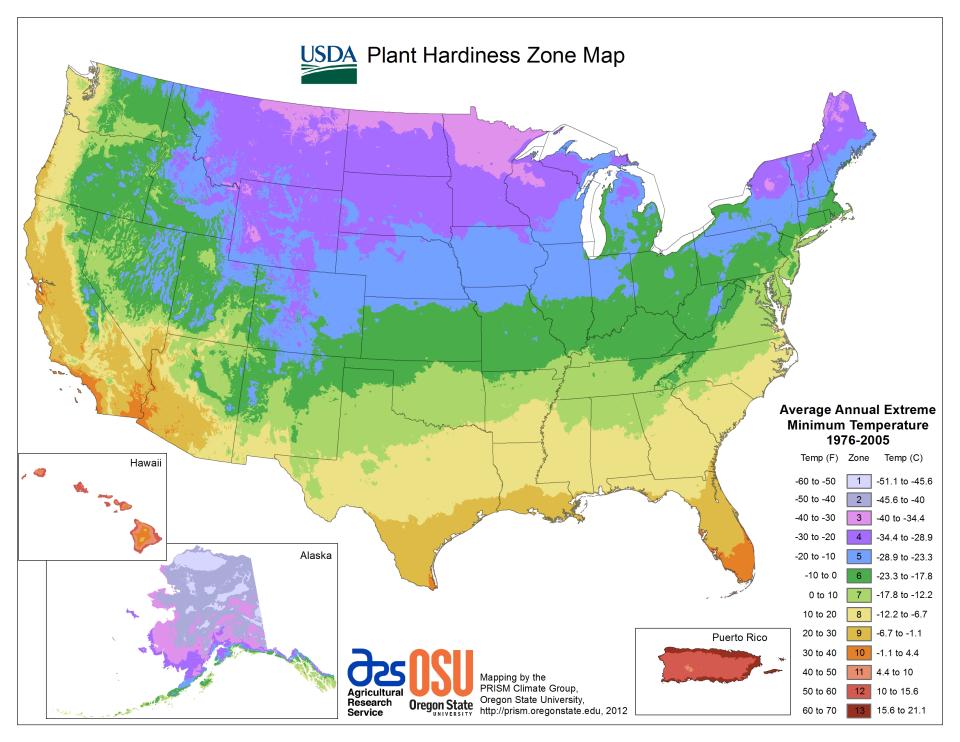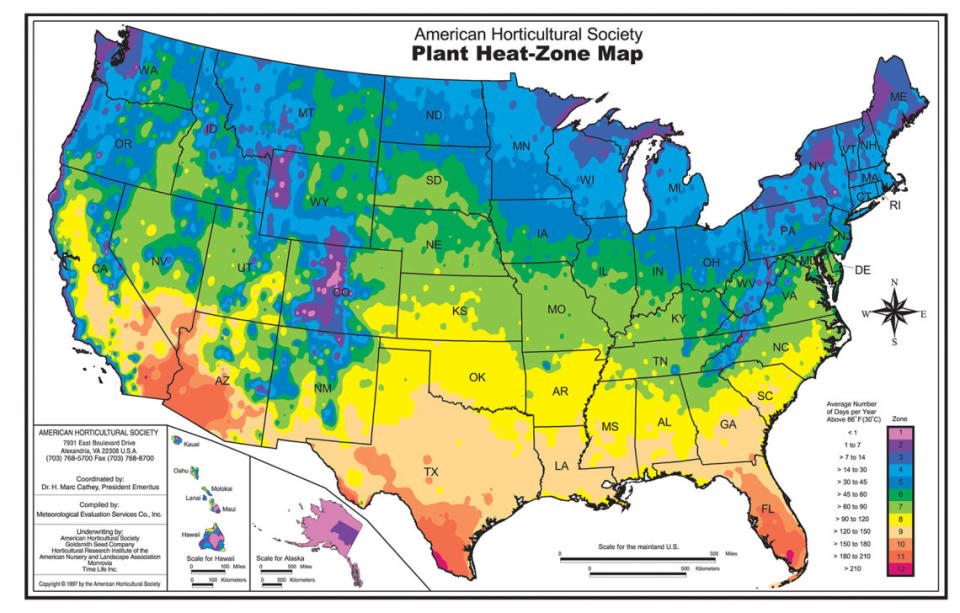Green Thumbs Are a Myth — Follow These 9 Rules To Get Your Garden Growing No Matter What
If you feel like a gardening failure, you're not alone. Fewer people than you think have a green thumb. The trick to good gardening is really about knowing just a few simple secrets. Once you apply them, boom! Instant blooms.
Gardening Tip #1 — Let the Sun Shine In
All plants need direct sunlight, but some require more than others. Knowing how sunny your spot is will help with plant selection. Some thrive in full sun (at least six hours of sunlight), part shade/part sun (four to six hours of direct sunlight), or full shade (fewer than four hours of direct sunlight). If you live in a particularly hot climate, it might be helpful to provide them with some shade in late summer and fall, even if they’re designated “full sun” plants.
Remember, the amount of sun a spot gets in direct sunlight changes with the seasons. If you’re unsure how significant the difference is as the days get shorter, grab a garden journal. Make note of how much direct sunlight that exact spot gets each hour from sunrise to sunset. (If the area is particularly large, you might have to divide it into zones.) Once the leaves on the trees start falling, the amount of direct sunlight can also change.
Gardening Tip #2 — Fortify the Soil
The best soils are loamy — a mix of 20 percent clay, 40 percent silt, and 40 percent sand. Good soil will provide great drainage. This will allow plenty of oxygen, water, and nutrients to get down to a plant’s roots. Chances are, you don’t have the perfect ratio — and that’s OK! There are plenty of things you can do to improve your soil. Or, you can skip all that and build raised beds or use containers and bring in store-bought soil. But if you’re curious about the exact makeup of your soil, you can send a sample to your local cooperative extension (nifa.usda.gov). For a nominal fee, they’ll send a detailed analysis and specific ideas for improving the soil.
Gardening Tip #3 — Plot Based on Your Plot
The most sure-fire way to plan for a successful garden is to choose plants that make sense for both your plot and your lifestyle. Do you live in a big-city apartment without a speck of soil? Container gardening might be an easier option than building a raised bed. (And safer, depending on the weight limits of your lanai!) Do you leave town every weekend? You might want to consider low-maintenance plants like coneflowers, annuals, and ornamental grasses for borders. If you’re too busy (or forgetful!) to make early-morning watering happen, automatic sprinklers can help pick up the slack. Do you have a trampoline or soccer goal in the backyard? Maybe do a little extra planning to avoid placing new beds or containers in areas where they stand a pretty good chance of getting trampled. You’ll be extra bummed when someone scores a goal while sprinting through new mums!
Gardening Tip #4 — Read the Fine Print
Knowing the “common” name for a plant isn’t always enough. It’s best to know the plant’s genus and species, too. What you think of as “coneflowers,” someone else might call something else. That’s where plant labels come in. They feature the scientific name (Echinacea) and the genus (purpurea, for example), along with a cultivar name (‘White Swan’), so you’ll always know exactly what you’re buying. Labels let you know how much sun, soil, water, and care a plant will need to thrive. But they also offer specifics about how tall and wide it’s expected to become. This helps determine how many of something you have room for. Labels offer a wealth of information, but that’s only valuable if you actually read them.
Gardening Tip #5 — Get in the Zone
You’ll also note that plant labels come with a recommended “hardiness” zone determined by the USDA (United States Department of Agriculture). They’ve drawn up a Plant Hardiness Zone Map for the entire country. The most recent map, released in 2012, divides the country into 13 zones based on the average annual extreme minimal temperature during the past 30 years. From that data, they can estimate where plants are likely to be perennial (meaning they’ll last at least two years). Check the map, or plug in your ZIP code at planthardiness.ars.usda.gov to find your zone.

A note: You’ll find that zone recommendations vary. One online article may advise that lavender will thrive in Zones 5 to 9, while another suggests that it’s well-suited for Zones 5 to 8. Just know two things: Hardiness varies by variety, so the more specific you can be about a plant’s name, the better. Second: As with pretty much everything related to gardening, there are no hard and fast rules. A plant may very well thrive despite a location in the “wrong” zone, and plants said to be a sure thing for a certain climate can and do die.
Something else to consider — your backyard comes with “microclimates,” which the USDA describes as “heat islands” or “cool spots.” The hot spots could be caused by an abundance of concrete. Cold air could amass in areas around a south-facing wall, a valley, or even beneath blankets of heavy foliage. Knowing your hardiness zone can only help so much. You know your garden better than the USDA does. Your plants’ health is going to depend on a host of other things. This includes soil condition, placement, water, sun, wind, and care. One last thing to keep in mind: The zones are based on an average, so obviously, an unseasonably cold (or warm!) winter is likely to affect your plants, too.
Gardening Tip #6 — Mind the Heat Sheet
Because temperatures are rising, some people — especially in the South — are more concerned about whether certain flowers can withstand the high temperatures that late summer and fall bring. To that end, the American Horticulture Society has created a Heat Zone Map. This divides the United States into 12 zones, each indicating the average number of days the temperature rises above 86 degrees fahrenheit in a year. Why 86 degrees? When temps are above that number, plants have trouble processing water quickly, and cell damage begins.
For context, Zone 1 has fewer than a single heat day, while Zone 12 has more than 210 days above the 86-degree threshold. Again, think of these as guidelines. Microclimates can make a huge difference in your plants’ well-being, as much as mulch, soil moisture, humidity, and length of exposure during winter months. A note: The heat zone is used less frequently than the hardiness zone, so you may have to do a little extra research to find out how a plant rates.

Gardening Tip #7 — Make It Rain
All plants need water. Although plant labels come with recommendations, figuring out exactly how often and how much to water is something that often happens through trial and error. Generally speaking, plants need about 1 inch of water per week, although drought-tolerant plants will survive longer between waterings and newly added plants might need a little more. The best thing to do from the outset is to group plants with similar watering needs together. That will help you create a schedule and streamline the process of setting up a sprinkler or hauling a hose or watering can.
Here’s the thing: Properly watering flowers takes time. It should be applied slowly and deeply, directly to the soil. If you don’t have the patience to take that on every few days, you might want to invest in automatic sprinklers or soaker hoses to help you get the job done right. And while under-watering is bad, overwatering isn’t great either. If your leaves start turning yellow, wilting, and looking limp even when you find the soil wet to the touch, back off. And don’t spray water directly on the foliage, as it can encourage fungal disease.
Gardening Tip #8 — Put Together a Meal Plan
While there are plenty of synthetic products available, most gardeners prefer to enrich their soil organically because it’s inexpensive, nontoxic, and biodegradable. There are a ton of options ranging from compost, manure (chicken, cow, horse), and bat guano, to mushroom soil, shredded leaves, and grass clippings. You can also mix and match materials, combining shredded leaves with manure. And the best part? Recycled waste becomes food for microbes, which after digestion, release nutrients that your plants will absorb through their roots. Talk about the circle of life!
Gardening Tip #9 — Investigate Regularly
You don’t really have to break out the magnifying glass, but honestly, the best way to keep your garden healthy and pest free is by making sure that unhealthy stuff is removed as quickly as possible. That can only happen if you stay on top of everything that’s happening in your garden. If you have a diseased plant, get it out of there before it infects other plants in the bed or container. If you notice chew marks or strange discharges on foliage, remove the damaged parts, and look for the culprits before they can do more damage. Many pests can be removed by hand or with a strong spray of soap and water. Always remove weeds as soon as you see them. Whether you simply pull them with your hand or you use a hoe, just make sure you remove the entire root to prevent it from regenerating.
Once the entire area is weed free, you can add 2 to 3 inches of mulch (shredded bark or pine straw) to the top of the soil — taking care to avoid touching the plants’ stems and crowns. Not only does it add a neat finish to your bed, it also helps prevent future weeds from popping up and helps soil stay moist. Likewise, when you see faded, dried blooms, it’s time for a little deadheading. Simply cut the bud at the stem to remove the spent flower, and it’ll keep your garden tidy while preventing the plant from growing to seed. Some flowering plants like delphiniums will even produce more blooms after deadheading.
A version of this article appeared in our partner magazine Fabulous Flowers.
Solve the daily Crossword

